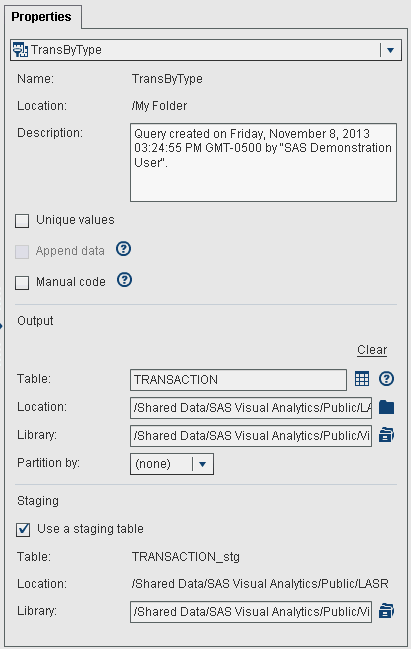Output Tables
About Output Tables
When you create a data
query, you specify an output table on the Properties tab.
When you save the data query, the output table is registered (or updated)
in the metadata. When you run the data query, the physical output
table is created and then the metadata is updated. The metadata that
is created when you save or run the data query enables you to use
the table as a source table for another data query or another SAS
application.
Specifying the Output Table
Every data query must
have an output table in order to run it. How you specify the output
table affects whether metadata is updated or created.
To specify an output
table:
The following table
shows alternative ways to specify an output table.
|
Change the name of the
output table. 1
|
|
|
Create a new output
table. 1
|
|
| 1If you replace the default table name, OutputTable, with another name before you save the data query, the data builder registers a new output table and uses it with the data query. | |
You can enter a name
that is up to 60 characters as the output table name in SAS metadata.
SAS limits physical table names to 32 characters, and SAS uses the
first 32 characters when it creates the output table. If a third-party
vendor database product is used for the output table, then the number
of characters might be less.
Copyright © SAS Institute Inc. All rights reserved.

